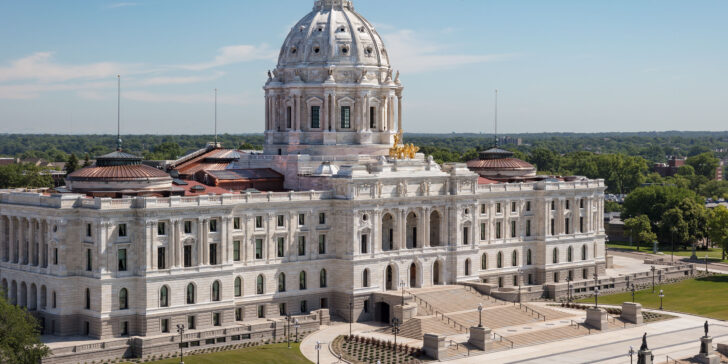
Less economic interference from Minnesota state government could have saved jobs during the COVID-19 pandemic, new research from the Georgia Center for Opportunity (GCO) suggests.
The GCO measured the impact of each state’s actions on its respective economy in a 510-page study “Assessing Each State’s Response To The Pandemic: Understanding The Impact On Employment & Work.” The report compared the states’ government’s responses to the pandemic using the Abridged Oxford Stringency Index (AOSI) from the Coronavirus Government ResponseTracker of Oxford University’s Blavatnik School of Government. GCO created a Government Severity Index (GSI), which analyzed the impact of school closures (kindergarten through 12th grade), workplace closures, gathering restrictions, capacity limits and stay-at-home mandates.
Minnesota ranked 14th on the GSI and 17th on the AOSI.
When the pandemic hit the United States in the spring of 2020, state governments took a variety of measures to attempt to reduce economic activities to limit the pandemic’s long-term impact on people and businesses. Nevertheless, thousands of businesses had to close their doors forever.
The report found the severity of actions states’ governments took in response to the pandemic was linked with lower nonfarm employment in March and June 2021, more than a year after the pandemic began in the U.S.
“However, the evidence suggests that the economic tradeoff was not for less COVID hospitalizations and deaths as many would have hoped,” the report said. “Only COVID cases have an association with the severity of governmental actions.”
While all studies, including this report, have limitations, the results of this report are strong statistical evidence that more governmental actions in limiting economies is correlated with greater harms on jobs and long-term recovery, GCO Director of Research and report author Erik Randolph told The Center Square in an emailed statement.
“I would interpret this to mean that Minnesota may have saved more jobs had it been less severe,” Randolph said. “The economic effect is 39,400 [jobs] per SD movement.”
Washington placed highest on the Government Severity Index and 14th on the Abridged Oxford Stringency Index. On both indices, Hawaii placed second highest and New York placed third highest.
Iowa experienced 181.5 COVID deaths per 100,000 people, the report said. Alabama, Arizona, Connecticut, Louisiana, Massachusetts, Mississippi, Rhode Island and South Dakota experienced more than 200 COVID deaths per capita while Alaska, Hawaii and Vermont experienced fewer than 50 COVID deaths per capita.
“Minor changes to the state responses could result in hundreds of thousands of individuals being able to continue to work and provide for their families,” the webpage summarizing the report said. “Our hope is that this report will encourage state and federal leadership to learn from the past 18 months and from the actions of fellow state leaders to weigh the severity of their actions on public and social health and wellbeing.”
View the states’ rankings here.
This article was originally posted on A lighter government touch would have saved more Minnesota jobs during pandemic